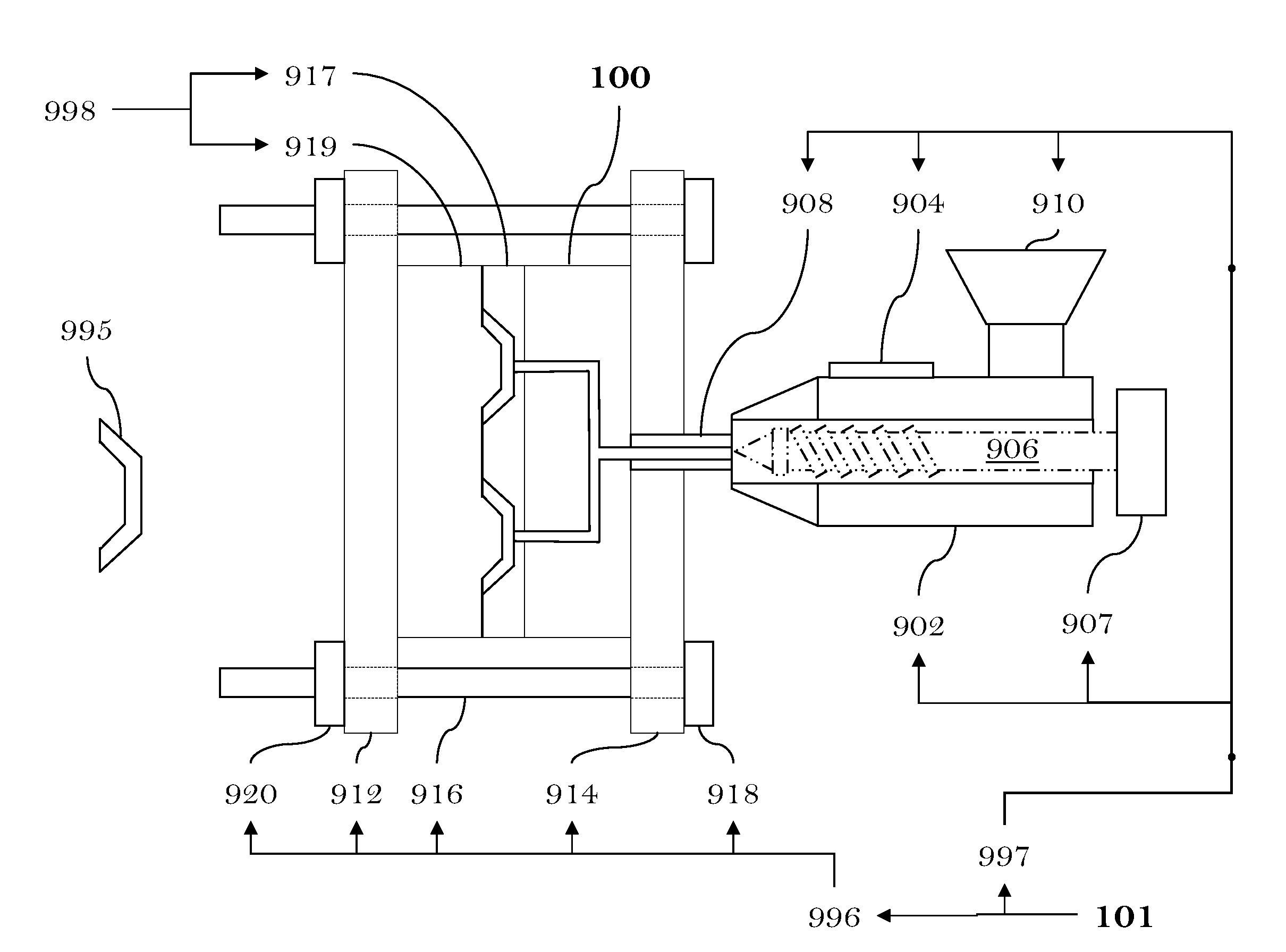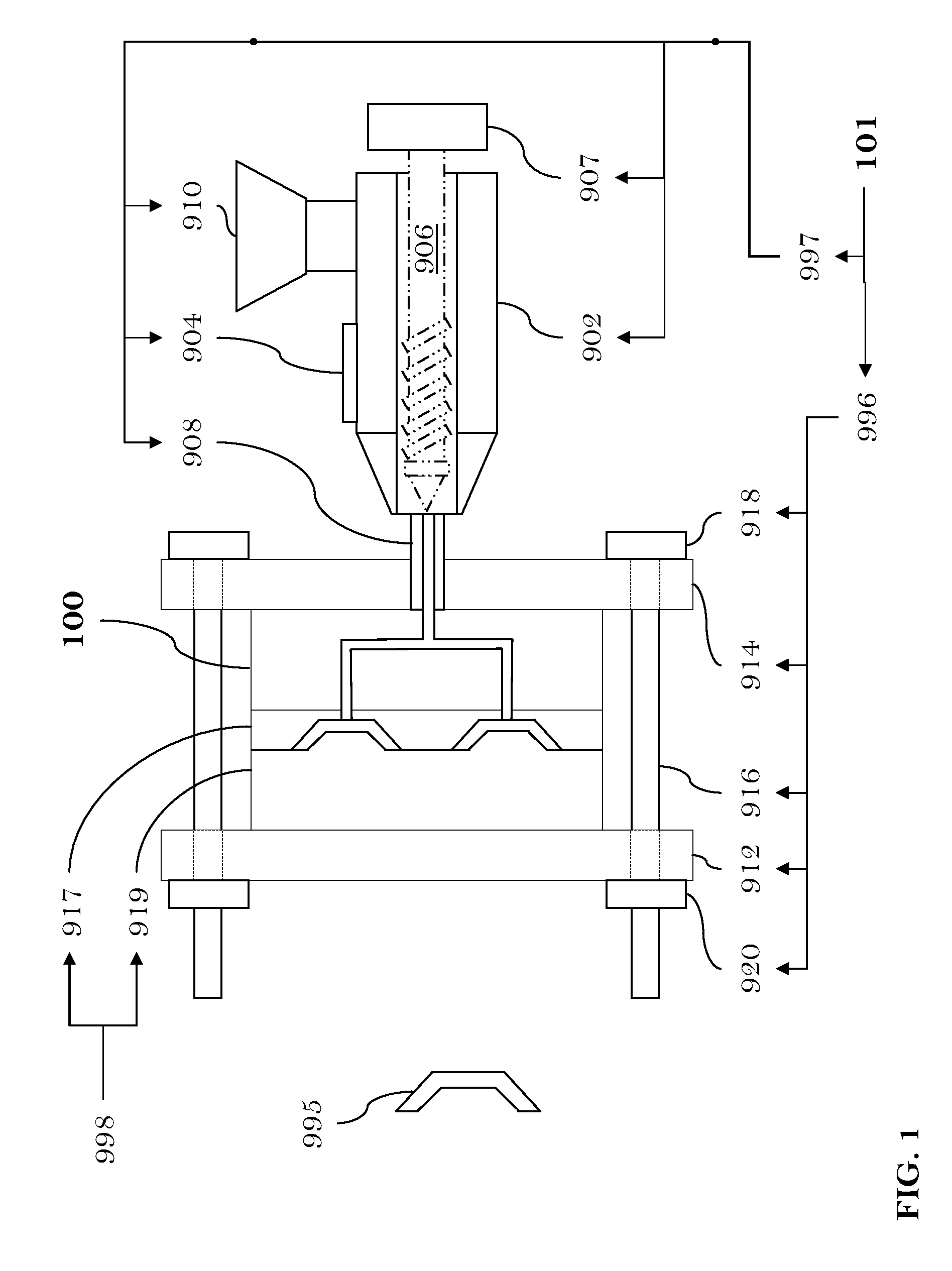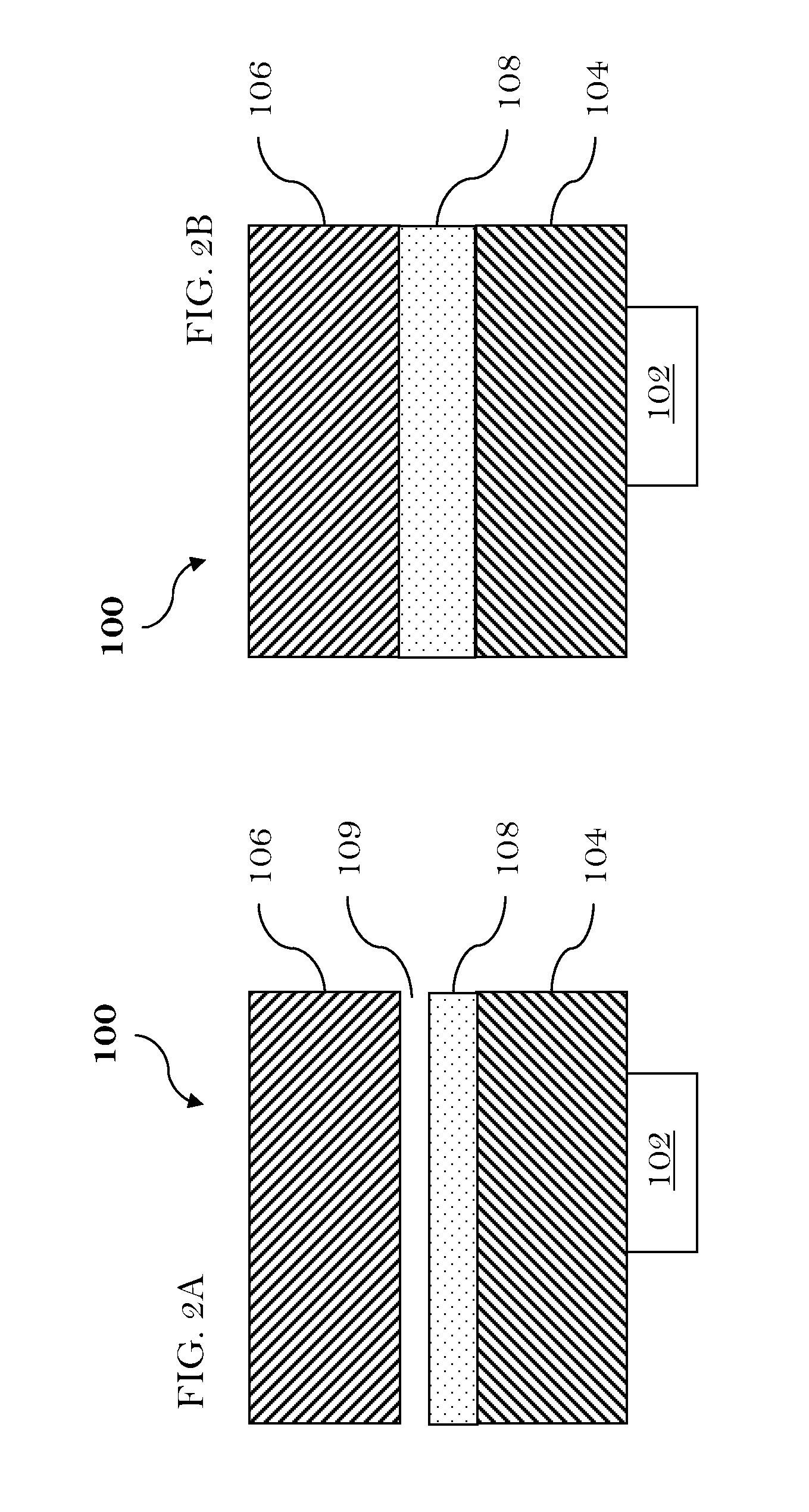Hot-Runner System having Non-Structurally Supportive Heat Insulator Including Visible Material
- Summary
- Abstract
- Description
- Claims
- Application Information
AI Technical Summary
Benefits of technology
Problems solved by technology
Method used
Image
Examples
Embodiment Construction
)
[0053]FIG. 1 depicts the schematic view, at least in part, of the HR system 100 and the molding system 101 according to the first non-limiting embodiment. The HR system 100 is configured for use with the molding system 101 (such as, an injection-molding system, etc). It will be appreciated that the HR system 100 and the molding system 101 may include components (and sub-systems) that are known to persons skilled in the art, and as such these known components will not be described in this document. A description of the known components and known sub-systems is provided, at least in part, with sufficient details in the following reference books: (i) “Injection Molding Handbook” authored by OSSWALD / TURNG / GRAMANN (ISBN: 3-446-21669-2), (ii) “Injection Molding Handbook” authored by ROSATO AND ROSATO (ISBN: 0-412-99381-3), (iii) “Injection Molding Systems” (Third Edition) authored by JOHANNABER (ISBN 3-446-17733-7) and / or (iv) “Runner and Gating Design Handbook” authored by BEAUMONT (ISB...
PUM
| Property | Measurement | Unit |
|---|---|---|
| Temperature | aaaaa | aaaaa |
| Flow rate | aaaaa | aaaaa |
| Pore structure | aaaaa | aaaaa |
Abstract
Description
Claims
Application Information
 Login to View More
Login to View More - R&D
- Intellectual Property
- Life Sciences
- Materials
- Tech Scout
- Unparalleled Data Quality
- Higher Quality Content
- 60% Fewer Hallucinations
Browse by: Latest US Patents, China's latest patents, Technical Efficacy Thesaurus, Application Domain, Technology Topic, Popular Technical Reports.
© 2025 PatSnap. All rights reserved.Legal|Privacy policy|Modern Slavery Act Transparency Statement|Sitemap|About US| Contact US: help@patsnap.com



